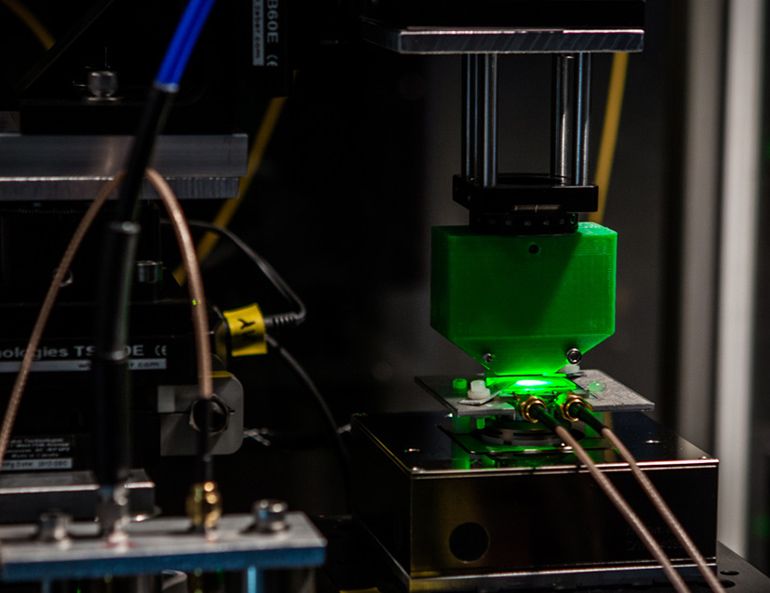Quantum interpolation makes viewing Biomolecules at room temp. possible without freezing. This technique will enable more powerful sensors than we have ever had before.
In the latest issue of Proceedings of the National Academy of Sciences, researchers from MIT and Singapore University of Technology and Design are describing a new technique that may finally give life scientists a detailed view into many of the biomolecules they work with. These days, X-ray diffraction is typically used to see the structure of a molecule. But this requires crystallization, a process not all molecules, including many proteins, are unwilling to undergo.
The technology uses tiny diamond crystals that have a nitrogen atom in place of a single carbon atom. These so-called “nitrogen vacancy centers” make the crystals react to minute fluctuations of magnetic and electric fields surrounding them. They’re so sensitive that the spins of individual atoms of a nearby molecule affect them enough to be detected by an external device.
Using nitrogen vacancy centers is not new, but previously the resolution that was achieved has not been sufficient to accurately image most molecules. That is because microwaves were typically used to detect the state of the diamond crystals, and the way they’ve been used has led to limited results. The latest research relies on “quantum interpolation,” which in simplified terms means taking multiple readings of the magnetic field around the diamond crystals using different microwave pulses at the same time.
